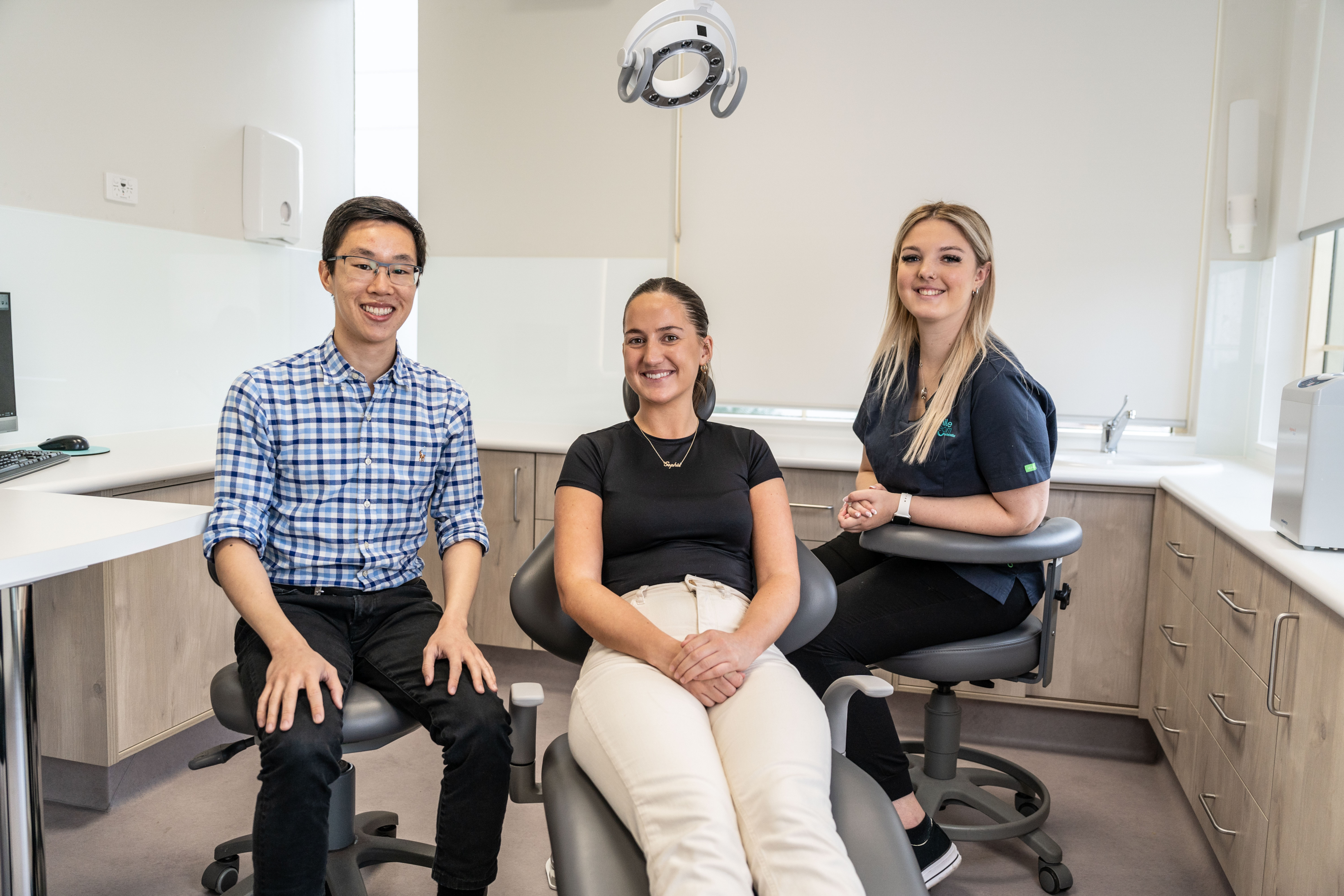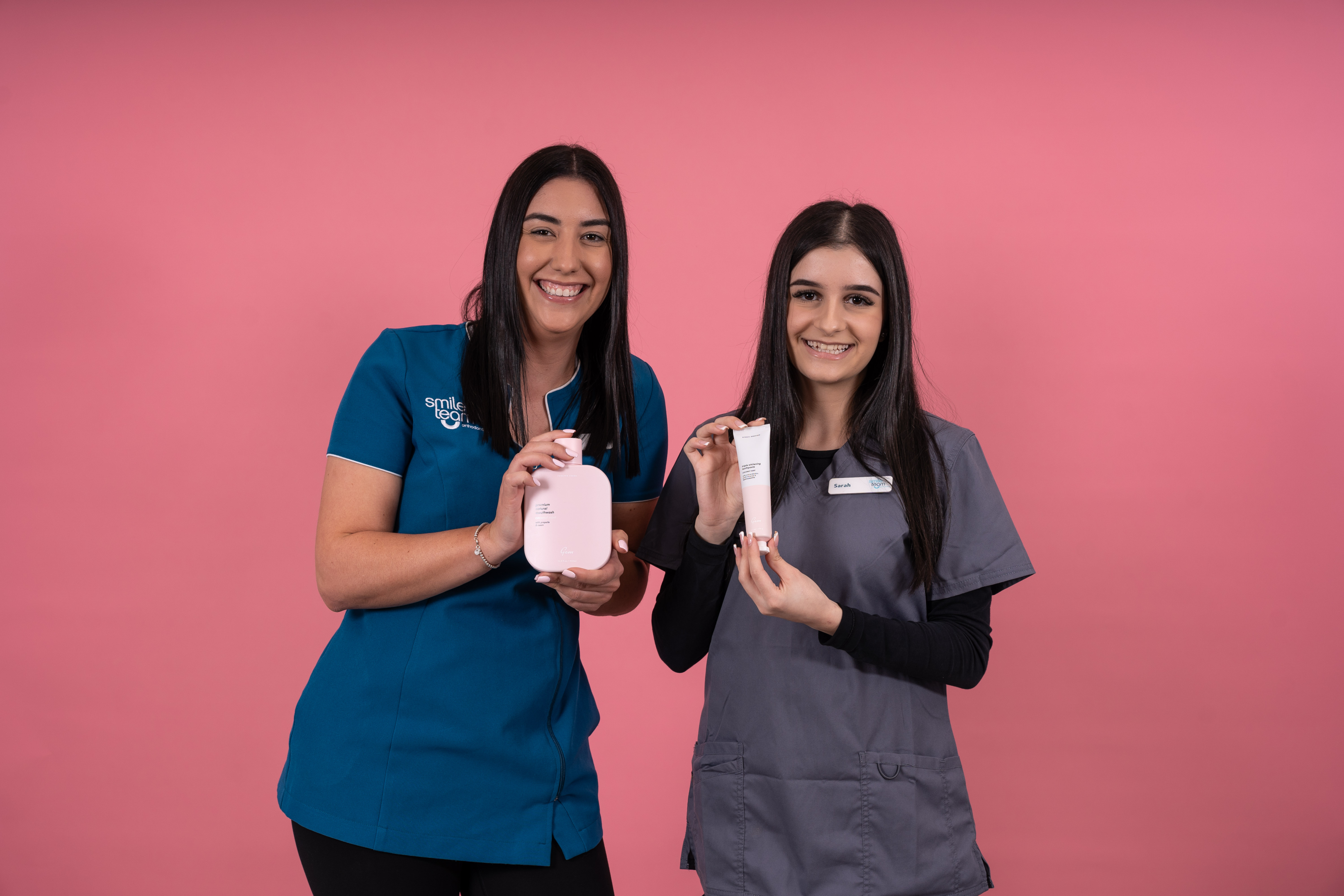
After months or even years of wearing braces, they finally come off soon. The thought of having perfectly straight teeth is exciting, but the journey of your orthodontic treatment doesn’t have to end there. One thing that often gets overlooked during the brace-wearing period is teeth whitening.
Once your braces are removed to unveil a beautiful smile, it’s natural to think about how you can make them even more stunning with brighter, whiter teeth.
Whether you’ve just had your braces removed or you’re counting down the days until it’s over, we have some expert tips from dentists on achieving a radiant smile. So sit back, relax, and get ready to show off those perfect teeth!
Why Should You Whiten Your Teeth After Braces?
One reason individuals seek to have their teeth whitened after orthodontic treatment is the desire for a more aesthetically pleasing smile. After enduring months or even years with braces, patients look forward to revealing a straight, well-aligned set of teeth.
While braces are instruments for achieving a well-aligned smile, they can lead to certain aesthetic challenges, such as discolouration or staining around the brackets and uneven whitening.
- Discolouration occurs when the enamel of the teeth gets damaged or stained, leading to yellow teeth. Poor oral hygiene during braces treatment traps food particles around the brackets and wires, causing damage or tooth decay.
- Stained teeth occur from consuming dark-coloured foods and drinks, which can leave behind pigments that stain the teeth.
- Uneven whitening occurs as brackets and wires cover parts of the teeth during braces treatment; these areas may not receive the same amount of whitening as others, resulting in a patchy or uneven appearance once the braces are removed.
Is It Safe to Whiten Teeth After Braces?
Yes, it is safe to undergo whitening treatment after braces, but you should consult your dentist first. Dentists can assess individual suitability and recommend the safest approach based on tooth sensitivity and enamel health. Consulting a dentist ensures that teeth whitening is effective and safe, contributing to a healthier and brighter smile.
Consider the following benefits of consulting a dentist for safe whitening after braces:
- Personalised Assessment: Dentists can evaluate the unique condition of your teeth and gums.
- Professional Advice: Receive expert recommendations tailored to your dental health.
- Safe Whitening Methods: Dentists can suggest the most effective and least abrasive whitening options.
- Customised Treatment Plans: Get treatments that take into account any post-braces sensitivities or issues.
- Monitoring and Follow-Up: Ensure the whitening process is progressing safely with dental professional supervision.
How long should I wait after braces to whiten my teeth?

It is generally recommended to wait for a few weeks to a month to determine the ideal waiting period after getting braces off before whitening your teeth. This waiting period allows your teeth to acclimate to life without brackets and wires, reducing sensitivity and making the whitening process more comfortable and effective.
Whitening immediately after braces removal may lead to discomfort due to the teeth being sensitive. Waiting for a month allows the exposed enamel to feel less sensitive, ensuring a more pleasant whitening experience.
- Consult your dentist before whitening to ensure your teeth can handle the whitening process without adverse effects.
Are There Any Downsides to Whitening Teeth After Braces?
Whitening teeth after braces may increase tooth sensitivity. This can be particularly problematic if your teeth are already sensitive following the removal of braces. There is also a possibility of uneven whitening due to the areas where braces were attached to your teeth, which might not have discoloured at the same rate as the rest of your teeth.
Bleaching solution used in whitening may cause gum disease if it comes in contact with the gums. Excessive bleach can also weaken and damage tooth enamel, causing teeth to appear blue, grey, or translucent.
It is important to consult your dentist to minimise these potential downsides. They can recommend the best approach to safely and effectively whiten your teeth while taking your individual dental history into account.
3 Whitening Options
Several effective methods are available to achieve a brighter, whiter smile. Each option varies in terms of convenience, cost, and results. Here are three whitening options for your pearly whites.
1. Over-the-counter products

Whitening toothpaste and mouthwash contain mild abrasives or low concentrations of bleaching agents to remove surface stains and prevent new ones from forming. Whitening strips, which are flexible strips coated with a gel containing peroxide, are applied directly to the teeth for a set period each day.
These over-the-counter teeth whitening products are generally affordable and accessible.
2. At-home whitening kits
At-home teeth whitening treatment kits can be in the form of trays and gel. Custom-made trays take an impression of your teeth for a snug fit and even distribution of the whitening gel. These kits are worn for a prescribed amount of time each day, usually for a few weeks, to achieve noticeable whitening results.
The bleaching gel contains carbamide peroxide or hydrogen peroxide that penetrates the enamel to lift deep-set stains.
At-home kits offer the advantage of professional-grade whitening within the comfort and convenience of your own home.
3. Professional teeth whitening service

Professional teeth whitening services are administered by a dental professional for effective and fastest results. In-office teeth whitening treatments typically use a high concentration of peroxide gel, activated by a special light or laser, to accelerate the whitening process. This procedure can produce significant whitening in just one visit.
Additionally, some dental practices offer professional take-home kits for use over a specified period and can achieve comparable results to in-office treatments, providing a flexible option for those who prefer to whiten their teeth at home.
Advantages of In-office Whitening
In-office whitening delivers faster results than at-home treatments, often achieving noticeable improvements in just one session because of the stronger whitening agents for effective and uniform coverage. Also, the procedure is conducted under professional supervision, which reduces the risk of complications. This can also help minimise sensitivity through the use of advanced techniques and desensitising products, providing a more comfortable experience for patients.
How much does in-office whitening cost after braces?
The cost of in-office whitening after braces varies depending on location, dentist expertise, and the specific whitening procedure used. On average, the price can range from AU$ 350 to AU$800 per session. For the most accurate pricing details, you are recommended to contact dental professionals directly.
How To Choose the Right At-Home Whitening Kit
When choosing the right at-home whitening kit, look for products with a dentist’s recommendation for reliability. Pay attention to the percentage of the whitening agent; a higher percentage can lead to faster results but may also increase the risk of sensitivity.
For those with sensitive teeth, select a formula designed to minimise discomfort. Also, consider the treatment duration; some kits offer quick results in a few days, while others may require a longer period to achieve the desired brightness.
How Long Does Teeth Whitening Last?
The teeth whitening result is not permanent, and their longevity is influenced by the following factors:
- Diet: Foods and beverages with strong pigments, such as berries, red wine, and sauces, can stain teeth over time.
- Smoking: Tobacco use leads to teeth discolouration.
- Coffee and Tea: These popular drinks contain tannins, which can contribute to staining the enamel.
How To Maintain Your White Teeth

- Brush and Floss Regularly: Maintain good oral hygiene with thorough brushing and flossing.
- Use a Whitening Toothpaste: This can help to prolong the brightness of your teeth.
- Avoid Staining Foods and Beverages: Limit the intake of coffee, red wine, tea, and foods that can stain teeth.
- Rinse or Brush After Consuming Staining Agents: If you do consume staining foods and drinks, rinse your mouth or brush your teeth afterwards.
- Schedule Regular Cleanings: Visit your dentist for regular cleanings to remove surface stains.
Conclusion
Teeth whitening after braces can be successfully achieved through several methods, including over-the-counter products, at-home whitening kits, and professional teeth whitening services. Each teeth whitening method offers varying levels of convenience, cost, and effectiveness.
Use these products as directed to avoid gum irritation and enamel damage. Consult with a dentist for personalized advice that takes your individual dental history into account, ensuring a brighter and healthier smile.